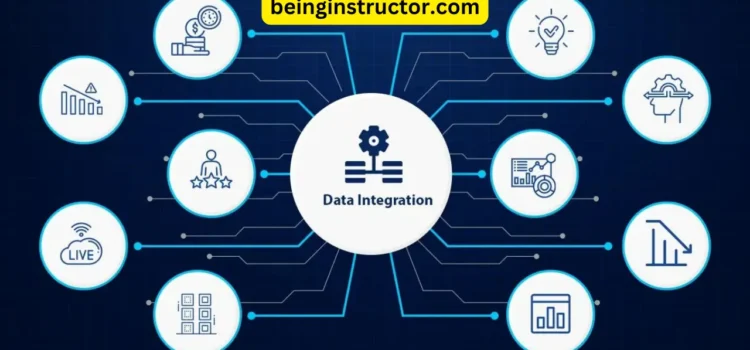Introduction
Data integration is the process of combining and harmonizing data from different sources into a unified view, enabling organizations to make informed decisions. In today’s interconnected world, where data is generated at a staggering pace from various sources such as databases, applications, and IoT devices, effective data integration has become paramount. It facilitates seamless communication between disparate systems, ensuring consistency, accuracy, and accessibility of information across the organization.
What is Data Integration?
At its core, data integration aims to break down data silos that often hinder organizational efficiency. These silos occur when data is stored in isolated systems or formats, making it difficult to analyze and derive insights. By integrating data from diverse sources, organizations can gain a holistic view of their operations, customers, and market trends. This holistic view empowers decision-makers with comprehensive insights, driving strategic initiatives and fostering innovation.
Data Quality and Consistency
One of the key challenges in data integration is ensuring data quality and consistency. When combining data from multiple sources, discrepancies in formats, standards, and semantics can arise, leading to inaccuracies and misinterpretations. To address this challenge, organizations employ data cleansing and transformation techniques to standardize and reconcile data elements. By enforcing data quality measures, such as validation rules and error handling procedures, organizations can mitigate the risk of poor data quality impacting decision-making processes.
Data Processing
Another crucial aspect of data integration is real-time or near-real-time data processing. In today’s fast-paced business environment, timely access to information is vital for agile decision-making. Real-time data integration enables organizations to ingest, process, and analyze data as it is generated, providing up-to-the-minute insights. This capability is particularly valuable in industries such as finance, healthcare, and e-commerce, where rapid responses to market dynamics can drive competitive advantage.
Advanced Analytics and AI
Moreover, data integration plays a pivotal role in supporting advanced analytics and artificial intelligence (AI) initiatives. By consolidating data from disparate sources, organizations can create comprehensive data sets for predictive modeling, machine learning, and other data-driven techniques. These advanced analytics capabilities empower organizations to uncover hidden patterns, predict future trends, and automate decision-making processes. From personalized recommendations in e-commerce to predictive maintenance in manufacturing, the applications of data integration in enhancing business outcomes are vast and diverse.
Using ETL
Effective data integration involves a multi-faceted approach that encompasses various techniques and technologies. One commonly employed method is extract, transform, load (ETL), which involves extracting data from source systems, transforming it into a consistent format, and loading it into a target repository. ETL tools streamline this process by providing graphical interfaces and automation capabilities, reducing the complexity of data integration tasks. Additionally, organizations are increasingly adopting modern data integration platforms that offer features such as data virtualization, which enables real-time access to disparate data sources without the need for physical data movement.
Using External Data Sets
Furthermore, data integration extends beyond internal data sources to encompass external data sets from partners, suppliers, and third-party sources. Integrating external data enriches internal analytics with additional context and insights, enhancing decision-making capabilities. However, organizations must address privacy and security concerns when integrating external data to ensure compliance with regulations such as GDPR and CCPA. Implementing robust data governance frameworks and encryption protocols helps safeguard sensitive information and maintain data integrity throughout the integration process.
Scalable Infrastructure
Cloud computing has revolutionized data integration by providing scalable infrastructure and services for storing, processing, and analyzing data. Cloud-based data integration platforms offer flexibility and agility, allowing organizations to adapt to changing business requirements and scale resources as needed. Additionally, cloud-native integration solutions leverage APIs and microservices architecture to facilitate seamless connectivity between cloud-based and on-premises systems. This hybrid approach enables organizations to leverage the benefits of both cloud and on-premises infrastructure while minimizing integration complexity.
Business Intelligence and Data Warehousing
Moreover, data integration is closely intertwined with business intelligence (BI) and data warehousing initiatives. By integrating data from operational systems into a centralized data warehouse or data lake, organizations create a single source of truth for reporting and analysis. BI tools then extract insights from this consolidated data repository, enabling stakeholders to gain actionable insights and drive strategic decision-making. Data integration is thus foundational to the success of BI projects, ensuring that decision-makers have access to accurate and timely information to support their initiatives.
Data Integration for Your Business
In conclusion, data integration is a foundational process that enables organizations to harness the full potential of their data assets. By breaking down data silos, ensuring data quality, enabling real-time processing, and supporting advanced analytics, data integration lays the groundwork for informed decision-making and innovation. In today’s data-driven landscape, where the volume and velocity of data continue to escalate, organizations that prioritize effective data integration will gain a competitive edge. As technology evolves and data sources proliferate, mastering the art of data integration will remain essential for organizations striving to thrive in the digital era.
For more interesting articles visit our homepage.






